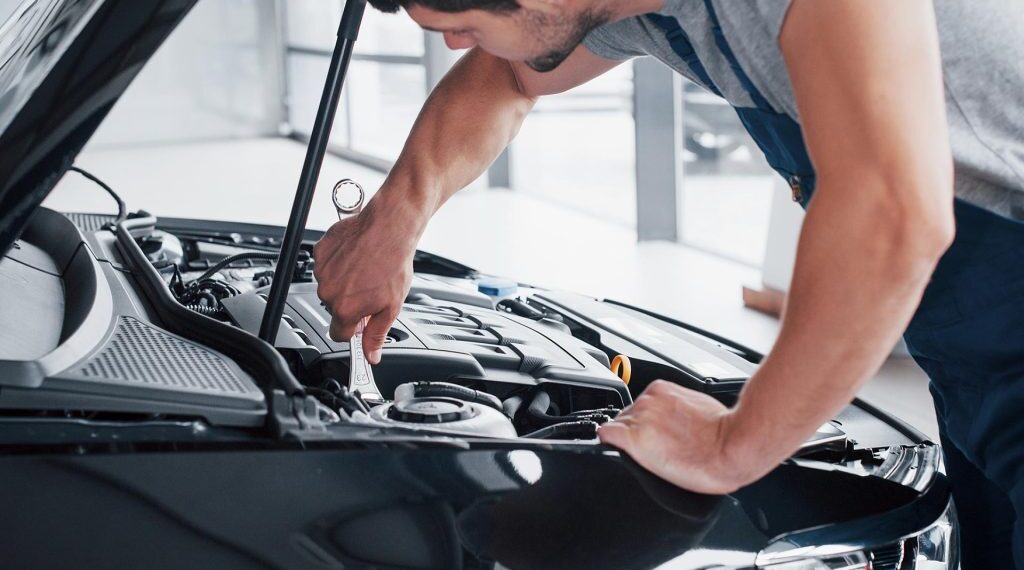The Heart of the Machine: Understanding Engine Dynamics
The engine is the powerhouse of any car, converting fuel into motion. Understanding its dynamics is crucial for appreciating automotive engineering. Let’s explore the key aspects of how this complex system works.
1. The Four-Stroke Cycle
Most car engines operate on a four-stroke cycle: intake, compression, combustion (or power), and exhaust. During intake, the piston moves down, drawing a fuel-air mixture into the cylinder. Then, the piston moves up, compressing the mixture. A spark ignites the compressed mixture, creating an explosion that forces the piston down, generating power. Finally, the piston moves up again, pushing the exhaust gases out of the cylinder. This cycle repeats continuously, providing the rotational force that drives the wheels.
2. Engine Components
Key engine components include the cylinders, pistons, crankshaft, camshaft, valves, and spark plugs. Cylinders are the chambers where combustion occurs. Pistons move up and down within the cylinders, connected to the crankshaft, which converts the linear motion into rotational motion. The camshaft controls the opening and closing of the intake and exhaust valves, ensuring the correct timing for each stroke. Spark plugs ignite the fuel-air mixture in gasoline engines.
3. Engine Types
Various engine types exist, each with its own characteristics. Common types include inline engines, V-engines, and flat engines. Inline engines have cylinders arranged in a straight line. V-engines have two banks of cylinders arranged in a V-shape, offering a more compact design. Flat engines, also known as boxer engines, have cylinders arranged horizontally, providing a lower center of gravity. Each configuration impacts the engine’s balance, size, and performance characteristics.
Transmission Systems: The Unsung Heroes of Automotive Performance
Often overlooked, the transmission system is crucial for translating engine power into usable motion, ensuring optimal vehicle performance and efficiency. It’s the gearbox that allows a car to accelerate smoothly and maintain speed.
1. Manual Transmissions: The Classic Choice
Manual transmissions, also known as stick shifts, require the driver to manually select gears using a clutch pedal and gear lever. This provides a direct connection between the engine and wheels, offering greater control and driver engagement. While less common in newer vehicles, they remain popular among driving enthusiasts for their simplicity and affordability. They typically consist of gears, shafts, and synchronizers housed in a casing filled with lubricating oil.
2. Automatic Transmissions: Convenience and Smoothness
Automatic transmissions (ATs) automatically shift gears based on the vehicle’s speed and engine load, eliminating the need for manual gear changes. This provides a more convenient and comfortable driving experience, especially in heavy traffic. They use a complex system of planetary gearsets, hydraulic controls, and a torque converter to achieve smooth and seamless shifting. Modern ATs often include multiple gear ratios for improved fuel efficiency.
Stopping Power: The Science and Safety of Brake Systems
Brake systems are vital for vehicle safety, converting kinetic energy into thermal energy to slow or stop a moving vehicle. Understanding their function and maintenance is crucial for all drivers.
1. The Fundamentals of Friction
Brake systems rely on friction to decelerate a vehicle. When the brake pedal is pressed, hydraulic pressure forces the brake pads against the rotors (or drums), generating friction. This friction converts the vehicle’s kinetic energy into heat. The amount of friction and the effectiveness of the braking system depend on factors like the materials used in the brake pads and rotors, as well as the force applied. Over time, the friction material wears down, necessitating replacement of the brake pads and potentially the rotors.
2. Hydraulic System: The Force Multiplier
The hydraulic system in a car’s brakes is a crucial force multiplier. When the driver presses the brake pedal, it pushes a piston in the master cylinder, pressurizing the brake fluid. This fluid travels through brake lines to the calipers at each wheel. The calipers then clamp the brake pads against the rotors, creating the friction needed to stop the car. Because the surface area of the pistons in the calipers is larger than the piston in the master cylinder, the system amplifies the force applied by the driver.
3. Anti-lock Braking System (ABS)
ABS is an advanced safety feature that prevents the wheels from locking up during hard braking. Wheel lockup reduces steering control and increases stopping distance, especially on slippery surfaces. ABS uses sensors to monitor wheel speed and modulate brake pressure individually to each wheel. If a wheel is about to lock, ABS rapidly pulses the brakes, allowing the driver to maintain steering control and reduce stopping distance.
4. Brake System Maintenance
Regular brake maintenance is essential for safety. This includes inspecting brake pads and rotors for wear, checking brake fluid levels and condition, and bleeding the brake lines to remove air bubbles. Brake fluid should be replaced every few years as it can absorb moisture, reducing its effectiveness. Ignoring brake maintenance can lead to reduced braking performance, increased stopping distances, and potentially dangerous situations.
Riding on Air: The Role and Evolution of Suspension Systems
Suspension systems are crucial for vehicle stability, handling, and ride comfort, absorbing shocks from road imperfections. Their evolution reflects advancements in materials, engineering, and a growing focus on driver and passenger experience.
1. The Core Function of Suspension
The primary job of a car’s suspension is to maximize the friction between the tires and the road surface, providing steering stability and ensuring comfortable ride quality. It absorbs energy from bumps and potholes, preventing it from being transferred directly to the vehicle’s frame and occupants. Without a functioning suspension system, driving would be jarring, unpredictable, and potentially dangerous. Modern systems aim to strike a balance between comfort and performance, adapting to different driving conditions.
2. Key Components of a Suspension System
A typical suspension system consists of several key components working in tandem. These include springs (coil, leaf, or torsion bars) that support the vehicle’s weight and absorb initial shocks; shock absorbers (dampers) that control the movement of the springs; and linkages, bushings, and joints that connect the components and allow for controlled wheel movement. Anti-roll bars (stabilizer bars) are also often included to reduce body roll during cornering, improving handling.
3. Evolution from Leaf Springs to Air Suspension
Early automobiles relied heavily on leaf spring suspensions, a simple and robust design. Over time, coil springs became more common due to their improved ride quality and packaging flexibility. More recently, air suspension systems have gained popularity, particularly in luxury vehicles and SUVs. Air suspension uses air-filled bags instead of steel springs, allowing for adjustable ride height and damping characteristics. This provides a smoother ride and the ability to raise the vehicle for off-road use or lower it for improved aerodynamics at high speeds.
Tires: The Essential Contact Between Vehicle and Road
Tires are the only part of a vehicle that makes contact with the road surface, playing a crucial role in acceleration, braking, steering, and overall safety. Understanding their function and maintenance is vital.
1. Tire Construction and Materials
Modern tires are complex structures composed of several layers of rubber, fabric, and steel belts. The outer layer, or tread, provides grip and wear resistance. Beneath the tread lies the carcass, which gives the tire its shape and strength. Steel belts enhance stability and puncture resistance. Different rubber compounds are used for various parts of the tire to optimize performance in different conditions. For example, some tires use silica-enhanced compounds to improve wet grip.
2. Types of Tires
Various types of tires are designed for specific purposes. All-season tires offer a balance of performance in different weather conditions. Summer tires prioritize dry and wet grip but perform poorly in snow and ice. Winter tires feature specialized tread patterns and rubber compounds for optimal grip in cold temperatures and snowy conditions. Performance tires are designed for high-speed handling and cornering. Understanding the intended use of a tire is crucial for selecting the right type for a vehicle.
3. Tire Pressure and Maintenance
Maintaining proper tire pressure is essential for safety, fuel efficiency, and tire longevity. Underinflated tires can lead to increased rolling resistance, reduced fuel economy, and premature wear. Overinflated tires can reduce grip and increase the risk of blowouts. Regular tire rotation helps ensure even wear and extends the life of the tires. Inspecting tires for damage, such as cuts, bulges, or uneven wear, is also crucial for maintaining safe driving conditions.
Lighting the Way: Innovations in Headlight Technology
Headlight technology has advanced significantly, enhancing visibility and safety for drivers and pedestrians alike. These innovations range from improved bulb technology to adaptive systems that adjust to driving conditions.
1. Halogen Headlights: The Standard Bearer
Halogen headlights, while a more established technology, remain a common and affordable option in many vehicles. These lights produce illumination by passing electricity through a tungsten filament surrounded by halogen gas. While less energy-efficient than newer technologies, they provide adequate light output for most driving situations and are easily replaceable.
2. Xenon (HID) Headlights: A Brighter Alternative
Xenon High-Intensity Discharge (HID) headlights offer a significant improvement in brightness and efficiency compared to halogen bulbs. They produce light by creating an electric arc between two electrodes in a tube filled with xenon gas. This results in a brighter, whiter light that illuminates the road more effectively, improving visibility, especially in low-light conditions.
3. LED Headlights: Efficiency and Design Flexibility
Light Emitting Diode (LED) headlights are gaining popularity due to their energy efficiency, long lifespan, and design flexibility. LEDs convert electrical energy directly into light, resulting in less wasted energy and a longer lifespan compared to halogen and xenon headlights. Their compact size allows for more creative headlight designs, enhancing the aesthetic appeal of vehicles.
Q&A
Question 1: What is the fundamental principle behind the operation of a car engine, and what are the stages involved in a typical four-stroke cycle?
Answer: A car engine converts fuel into motion. The four-stroke cycle, common in most car engines, consists of intake (drawing a fuel-air mixture into the cylinder), compression (compressing the mixture), combustion (igniting the mixture, forcing the piston down to generate power), and exhaust (pushing exhaust gases out). This cycle repeatedly provides rotational force to drive the wheels.
Question 2: What are the key differences between inline, V, and flat engines, and how do these differences impact performance?
Answer: Inline engines have cylinders arranged in a straight line; V-engines have two banks of cylinders in a V-shape, offering a more compact design; flat engines (boxer engines) have horizontally arranged cylinders, lowering the center of gravity. These configurations affect engine balance, size, and performance characteristics, influencing factors like smoothness and power delivery.
Question 3: How does a hydraulic brake system work, and what is the role of the Anti-lock Braking System (ABS)?
Answer: A hydraulic brake system uses pressure from the master cylinder, activated by the brake pedal, to force brake fluid through lines to the calipers. This pressure forces brake pads against rotors, creating friction to stop the car. ABS prevents wheel lockup during hard braking by using sensors to monitor wheel speed and modulate brake pressure individually to each wheel, maintaining steering control and reducing stopping distance.
Question 4: What are the main types of transmissions, and what are their respective advantages?
Answer: Common transmission types include automatic (AT), manual (MT), continuously variable (CVT), and dual-clutch (DCT). ATs offer ease of use and smooth shifting; MTs provide driver control and lower cost; CVTs excel in fuel efficiency and seamless acceleration; DCTs offer quick shifting and a sporty feel. Market share varies, with automatic transmissions currently dominating but CVT’s projected to grow.
Question 5: What is the primary function of a vehicle’s suspension system, and how have suspension systems evolved over time?
Answer: A vehicle’s suspension maximizes tire-road contact for stability and ride comfort, absorbing shocks from road imperfections. Evolution started with leaf springs, progressed to coil springs offering better ride quality, and now includes air suspension (adjustable ride height and damping) and active/adaptive systems (real-time adjustments based on conditions and driver preferences) for enhanced control and comfort.
References:
- https://en.wikipedia.org/wiki/List_of_auto_parts
- https://guides.loc.gov/automotive-industry/regulations
- https://www.autosinnovate.org
- https://oec.world/en/profile/bilateral-product/motor-vehicles-parts-and-accessories-8701-to-8705/reporter/usa






